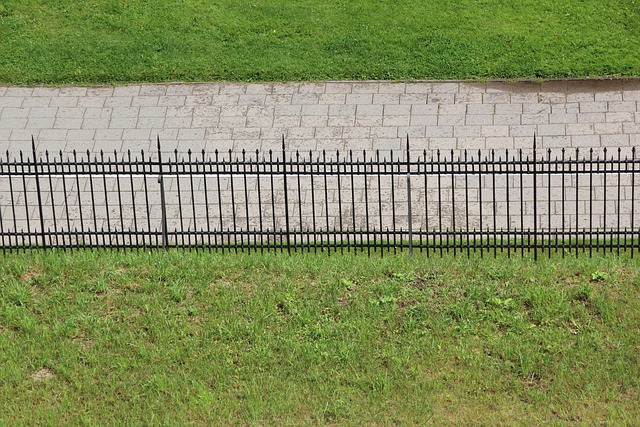Large properties present unique fencing challenges, demanding solutions that balance aesthetics, security, and affordability. This article explores cost-effective fencing solutions tailored to meet the specific needs of extensive landholdings. We’ll delve into the distinctions between traditional fencing methods and modern, budget-friendly alternatives, highlighting durable materials that offer both strength and savings. Additionally, we’ll discuss installation techniques designed for longevity, along with maintenance strategies to ensure long-term cost efficiency.
- Understanding Fencing Needs for Large Properties
- Traditional Fencing vs Cost-Effective Options
- Durable and Affordable Materials
- Installation Techniques for Longevity
- Maintenance and Long-Term Savings Strategies
Understanding Fencing Needs for Large Properties
Large properties present unique fencing challenges due to their extensive perimeters and diverse landforms. Understanding these needs is crucial to selecting cost-effective solutions. For instance, a rural ranch may require sturdy fences to contain livestock, while an urban estate might demand more aesthetic, privacy-focused designs that complement the surrounding landscape.
Moreover, functional considerations such as security, durability, and ease of maintenance vary based on property use. Properties with high foot traffic or valuable assets may necessitate higher security fencing options, whereas areas with sensitive ecosystems require materials and methods that minimize environmental impact.
Traditional Fencing vs Cost-Effective Options
Traditional fencing methods, while aesthetically pleasing, can be expensive and impractical for large properties. Standard wood or vinyl fences often require frequent maintenance and replacement due to weather damage, rot, or fading. These ongoing costs can add up significantly over time.
Cost-effective fencing solutions offer a more sustainable and financially prudent approach. Materials like steel, aluminum, or even concrete can provide durable, low-maintenance alternatives. These options are not only more resistant to the elements but also require less upkeep, saving property owners time and money in the long run.
Durable and Affordable Materials
When it comes to fencing large properties, cost-effectiveness doesn’t have to mean sacrificing quality or durability. Modern materials offer an array of options that are both affordable and long-lasting. For example, vinyl fencing has gained popularity due to its low maintenance, resistance to rust and rot, and ability to mimic the look of wood without the regular painting or staining required.
Another durable and cost-effective choice is chain link fencing, which provides security and privacy at a fraction of the cost of more ornate styles. It’s also highly versatile, suitable for both residential and commercial properties. Furthermore, new innovations in materials like recycled plastic and composite woods are providing eco-friendly alternatives that not only reduce costs but also contribute to a more sustainable future.
Installation Techniques for Longevity
For large properties, installing fencing that stands the test of time is crucial. One effective technique involves using post-set installation methods, especially for wooden fences. This process involves digging holes and setting posts at strategic intervals, ensuring proper spacing and depth. By backfilling with concrete, the posts are securely anchored, providing stability against strong winds and heavy loads. Such a method enhances the structural integrity of the fence, extending its lifespan significantly.
Regular maintenance further contributes to longevity. Treating wooden fences with weather-resistant preservatives annually can protect them from moisture and insect damage. Metal fencing benefits from regular inspections for signs of rust or corrosion, which can be addressed promptly to prevent widespread deterioration. These installation and maintenance strategies ensure that fencing solutions remain robust and cost-effective over the long term.
Maintenance and Long-Term Savings Strategies
Maintaining a fence is an ongoing task, but adopting strategic approaches can significantly reduce long-term maintenance costs for large properties. Regular cleaning and inspection are key; removing debris, overgrowth, and repairing minor issues promptly prevents more extensive repairs later. A simple annual deep clean with pressure washing and painting or sealing the fence can extend its lifespan, keeping it looking new and robust.
Investing in durable materials and quality installation also contributes to long-term savings. Modern fencing options, such as vinyl, aluminum, or high-density polyethylene (HDPE), require less maintenance than traditional wood fences. These materials are resistant to rot, rust, and insect damage, reducing the frequency of repairs and replacement parts needed over time. Additionally, a robust installation that accounts for potential environmental factors ensures the fence stands strong against harsh weather conditions, further minimizing maintenance needs.
